Use a programmable thermostat to set more energy-efficient air-conditioning temperatures for summer5/18/2022 Action of the Month for JuneBasic Action: Use a programmable or Wi-fi thermostat to reduce energy use and cost when air-conditioning (AC)
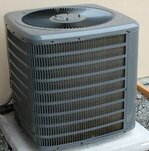 In typical homes, air conditioning uses more electricity than anything else—16% of total electricity used. Each degree below 78°F increases your energy use 3-4%. Reducing the amount of air-conditioning is where savings are—for energy and cost.

Using air-conditioning wisely Air-conditioning is to keep people more comfortable, not empty buildings.
https://www.cnn.com/2020/05/24/health/how-to-stay-cool-without-air-conditioning-wellness/index.html Here are some Tips to stay cooler with less or no air-conditioning
0 Comments
Action of the Month for May Composting is a kind of recycling. Compost, also known as humus, is the rich soil that the composting process creates from suitable combinations of
Basic Action: Turn your food waste and yard waste into compost to create new nutritious soil Why would you want to compost?
Typically, 20% of household waste is food waste and that adds up to 80 billion pounds of food waste in the U.S. per year. If food waste goes into the garbage and on to the landfill, it turns into methane gas. Methane is a greenhouse gas 70 times more able to absorb heat from the sun than even carbon dioxide. We have solutions for that! Place your food waste into a compost container instead of a garbage container. You can compost in your home yard or you can use a commercial composting service to pick up food waste curbside on a regular basis. The service adds other ingredients, too, and creates compost from it. Much of the local commercial compost is used by local farms to improve their soil and your locally grown foods. If you have not composted at home before, you will need to learn how to select a place for it; what materials the compost pile, bin, barrel, or rotary tumbler will need added to it to make compost; and the processes you use to mix the compost periodically for its moisture and temperature needs. Finished compost is a dark, crumbly texture with a sweet and earthy aroma. Resources to learn how to make your own compost at home:
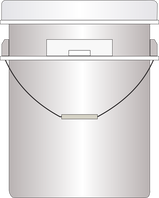 Resources about using a commercial composting service, an easy way to compost food waste:
You can find out more about their services at their websites with the links that follow. Happy Trash Can YES 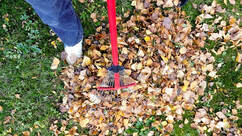 Resources for pickup of yard waste for composting The City of Bozeman Yard Waste Compost Collection is for customers of the City of Bozeman garbage pickup. They can pickup yard waste on a schedule during May to August. Check the link above for the details if you are a City of Bozeman garbage collection customer. If you use a different collection service, contact yours to ask what their procedure is for collecting yard waste and composting it. And you can also check with YES commercial composting service about their yard waste pickup service. Using compost once you make it or receive it back from a composting service 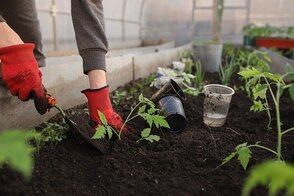
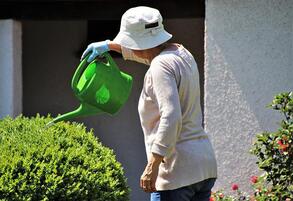 It’s also possible to make a compost liquid by placing a handful or two of compost into a piece of permeable fabric like cheesecloth or burlap. Pull the fabric edges together and tie it into a compost-filled ball. Place that in your garden watering can and fill with water. Let it sit and steep until it is amber-colored. Leave the ball of compost in the can while you sprinkle the liquid around your trees, shrubs, and garden plants. You can use the same ball of compost and refill your watering can so it can steep into amber-colored compost liquid two or three times before taking the compost ball out and spreading the remaining compost contents into your garden. Advanced Action: If you already compost your yard and food waste, Thank You! Thank you! Thank you! Your advanced action for this month is to talk to others about the benefits of composting and how to get started.
Action of the Month for April Birds provide humans with so many benefits. Their colors can be beautiful, their songs can bring us joy and peace, and their behaviors can inspire wonder and appreciation. Practically speaking, they help control insect populations, disperse seeds for plants we need, decrease the spread of disease by consuming carcasses, and pollinate plants we need and enjoy. 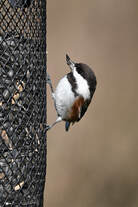 Basic Action: Protect birds from dangers that are human-caused Birds need our help now! The Cornell Lab of Ornithology reports that nearly 3 billion birds have disappeared from the U.S. and Canada in the last 50 years. The population of 40% of bird species worldwide are decreasing, including over half of all prairie birds. One in eight species are threatened by extinction. We can be part of the solution! We can make improvements in our own environments that can safeguard bird lives. Birds need our help in to reduce these three important dangers:
 Window Strikes The leading human-cause of bird mortality may be window strikes. Audubon Pennsylvania reports that the low estimate is that at least a million birds are killed per day by window strikes. This is because of both reflections and see-through effects of windows. Reflections in a window cause the birds to think they see natural space to fly into when the window reflects that. If windows are lined up across rooms so that birds see through the closest window, through a room, and out the window on the other side to the outdoors, they do not sense the windows blocking their route through. 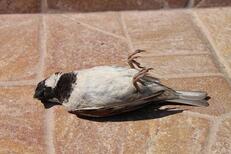 50% of the collisions leave no evidence below the windows because many birds that strike windows fly off and die later of their concussions and internal injuries. They can suffer for days before the end. And if that bird is a parent, their young are likely to die as well without their care. Numerous robins and cedar waxwings die by collision. Window collisions are preventable by making your windows visible to birds in order to prevent window strikes. Treat your windows that face bird feeders or good bird habitat first. Here are some easy and economical ways to reduce bird window strikes:
Bird habitats Bird habitats have been degrading and destroyed in grasslands, forests, oceans, and neighborhoods. 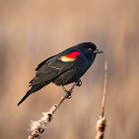
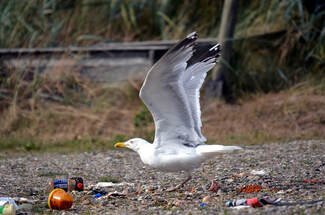
,Cats We love our pets. And one of the best ways to protect feline pets is to keep them safely indoors. This also protects the bird population. Free-roaming cats kill about 2 billion birds a year and have contributed to extinction of some species. Even well-fed cats kill birds, so they do not kill just because they need food. Cat owners, there are some actions you can take to benefit both your pets and the birds outdoors. Bring your cats indoors so that they are not subject to danger from vehicles or other animals, and it will also protect the bird population. Neuter or spay cats. Bring strays to the animal shelter for care and to find good homes. If you are committed to your cat being outside, use a collar with a bell on it to warn birds or tie on a brightly-colored little neckerchief that will show birds their movements nearby. You can love your cat and love the birds.  Advanced Actions: Learn about and advocate for bird survival
Action of the Month for March Basic Action: In March, as we begin our season of Lent, our Action of the Month asks you to commit to reducing your transportation carbon footprint by 10%. This is like a tithe to honor God’s creation. The ELCA church’s Social Statement on Caring for Creation: Vision, Hope, and Justice, asks us to be a community committed to the principles of sufficiency and sustainability. The Statement advocates for an environmental tithe and other measures to limit consumption and reduce waste. Examples below can help you achieve the 10% reduction of your transportation footprint.  Reduce vehicle engine idling – When your car idles, you are using gasoline to achieve 0 mpg! Idling more than a minute or two uses more gas than starting your car, except in the case of hybrids. Where can you reduce the amount of gasoline waste when you are not moving?
 Drive differently
 Maintain your vehicle to lower your emissions
 Require fewer truck-delivery services
Use some electronic communications instead of travel, when possible  Minimize air travel The average domestic commercial flight in 2019 emitted 0.39 pounds of carbon dioxide equivalents per passenger mile. How many miles did you fly in 2021? Multiply that by 0.39 to calculate your share of carbon emissions. from flying.
 Check to see your progress. Compare your gasoline expenditures or frequency of fill-ups.
In these days of higher transportation fuel costs, using these methods to save on transportation use can also save you money. DID YOU KNOW… The transportation sector is the largest source of carbon emissions in the U.S. and creates about 1/3 of our annual global warming emissions. It is also a major source of air pollution. Low-income communities of color are especially impacted by living close to major highways, warehouses, airports, and ports where the air pollution is higher. (Source: Sierra Club 2021 Summer Newsletter, “What We Want for the Next Generation” by Michael Brune)  Advanced action: Make a big reduction by choosing to reduce dependence on fossil fueled transportation in a big way. If it is time for a shop for a newer car, upgrade to an alternative fuel vehicle—electric or hybrid—or one that has significantly higher miles per gallon fuel efficiency than your previous model. Action of the Month for February Basic Action: Express gratitude to others who are also taking steps to care for creation and protect our environment during the time of changing climate.  For February, the month in which we celebrate Valentine’s Day and Love, our Action of the Month is to contact four (4) either individuals or organizations—business, non-profit, or public sector organizations—and express thanks to them for something they have done as a practice or a policy that helps protect our environment. You can communicate your message through your choice of email, phone call, or written note.
Need ideas? Here are a few examples to think about as you consider your choice of recipients: More examples are included when you open the link below.
More examples of friends of the environment – click here What are some things you can mention?
And, after you send your messages to them, please say a prayer to ask blessings on them and their continuing actions. Advanced option: Go ahead and send to additional people or organizations. If you have been participating in Creation Care’s Action of the Month Program during October, November, and/or December, we would like your feedback about your use of the program. The announcement of the January Action of the Month follows this questionnaire. We are not asking for your name or any identifying information. We are interested in our levels of involvement across our group of participants for these three months. We would like to report back to the congregation the kinds of steps that are being taken by our respondents to care for creation by caring for the Earth. There are five (5) items to answer. For each item, please click any of the checkboxes that show an answer that applies to you. You can check multiple boxes for each item if they apply. Action of the Month for January
Basic Action Choose to eat no meat on at least one day each week. With drought conditions here in Montana, water conservation is so important. Did you know that It requires 2500 gallons of water and 5 pounds of grain to make one pound of beef? (Source: footnote #1) Beef is one of the most water-intensive foods. Shifting away from animal products to a plant-based diet can shrink your water footprint significantly. (Source: https://learn.eartheasy.com/guides/45-ways-to-conserve-water-in-the-home-and-yard/) If residents of the thirty-six countries who are members of the Organization for Economic Co-operation and Development, which includes North America, Europe, Japan, Australia, New Zealand, and Israel, practiced just one meatless day each week, the world would gain 120 million tons of grain which could be used to feed the hungry this year.” (Source footnote #2) Think of the difference weekly Meatless Mondays (or any other day of the week) could make to feed the hungry. DID YOU KNOW... Michael Pollan, well-known author, journalist, and Professor of Science and Environmental Journalism, observed that the average nine ounces of meat eaten per day per American is a significant part of the carbon footprint. While there is a place for meat eating, he says, it’s tinier than what we consume now. He recommends cutting down on meat, even if you do not eliminate it entirely. His opinion is that this change in diet is more important than anything else that you do to tackle climate change—and that we do need more vegetarians than we currently have. (Source footnote #3) Advanced Action for those already eating meatless one or more days per week If you already eat meatless one day or more a week and eat eggs and dairy, on one of your weekly meatless days eat a plant-based diet without eggs or dairy. Find out more… tips-about-eating-meatless.pdf Click here Find out more about meat alternatives, plant-based proteins, and recipes on this tips page. 1 Rogers, Elizabeth, & Kostigen, Thomas, M. (2007). The Green Book, New York: Three Rivers Press. p. 69. 2 Jahren, Hope (2020). The Story of More. Publisher p.50. 3 Ebersole, Rene, (2014). Food Fight. Audubon Magazine, November-December, 2014, p. 61. Action of the Month for December Basic Action Installing and using a programmable thermostat properly is one of the easier ways to save energy and money and help fight the global change of climate. It allows pre-programmed settings to regulate the temperature of your residence in both winter and summer. In winter, use one setting when you are home awake. Use a lower one when you are asleep or away from home. U The point of using heat is to keep people comfortable, not empty houses. Set it for colder when you will be sleep or away from home for 8 hours or more. A WiFi thermostat, sometimes referred to as a Smart thermostat, can be used as part of a home automation feature to control heating, ventilation, and air conditioning in a home.
If you shop for a programmable or WiFi thermostat, look for a model with the EnergyStar label. You can view a video about choosing an EnergyStar thermostat ahead of your purchase. If you are a qualified Montana NorthWestern Energy residential customer, you can look for either electric or natural gas rebates for a programmable or Wi-Fi thermostat. Learn about their rebate programs for these thermostats, and download their forms from the above link to apply. After installing your programmable or WiFi thermostat, experiment to find your best minimal heating needs for when you are home awake and for when you are home asleep. You can start your experimental settings with 68 degrees during the day and 55 degrees at night. If you want, you can try moving it up or down from there. Many people set their heat to 55 degrees at night programming their thermostat 10 to 15 degrees lower for the eight sleeping hours. If you use more than one thermostat in your home because you have heating or cooling zones, you will need a programmable thermostat for each zone. Your advantage is that you may be able to significantly reduce heating or cooling to zones that are not currently in use—for example, the kids’ bedrooms when they are away at college or a guest area not in use. Switching from a traditional thermostat to a programmable or WiFi thermostat can leave you with the warm feeling of knowing you are reducing greenhouse gas emissions and taking a part in improving the environment for generations to come. Tips-for-programmable-thermostats.pdf Advanced Actions for those already using a programmable or WiFi thermostat: If you are running your sleep setting and/or away-from-home thermostat setting at 57 degrees or higher, try lowering your thermostat settings in the winter by at least 2 degrees lower than you used before. Check out the tips at the link above, too. -or- Help a friend install a programmable thermostat. Action of the Month for November Between Thanksgiving to New Year’s, household waste typically increases by over 25%. This includes food and items used to serve and eat with, gift packaging, decorations, and more. It’s time to start preparing for the holidays. For this month’s action, look through the list of the six Basic Action categories below and select one to work on this month. Basic Action Categories--Choose one with some items that are new for you Saving Energy
Shipping
Holiday gatherings
Gifts of service We hear about shortages of items for sale or difficulties in finding some products this holiday season. Giving gifts of service bypasses difficult shopping for you and brings smiles to the faces of those to whom you provide your service. Examples of possible services:
Gifts of "stuff"--buy less, buy local, buy "green"
Freeing up space: Find good homes for good items you no longer will use
Advanced Action:
Some sustainable holiday ideas found here came from Gallatin County’s Reducing Holiday Waste webpage. You can see more there about cards, gifts, wrapping, and recycling Christmas trees and use their ideas as advanced action for November. |
Action of the MonthJoin our Creation Care’s Action of the Month Program to carry out a monthly task for the earth! Purpose of the program:
Part of our spiritual calling for personal discipleship at home and work is to care for creation. Because the quantity of actions this implies can seem overwhelming, our Action of the Month Program provides one action to take each month. At the end of the month, you have a new habit. And if you find the basic action is something you already do, or if you find it not appropriate to your situation, or if you simply want to be a high-achiever, you can also find an advanced option to use as your alternative. Categories |

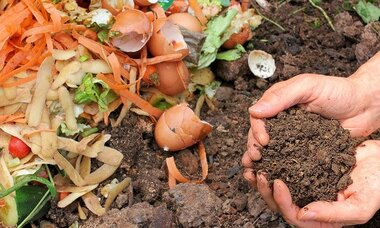
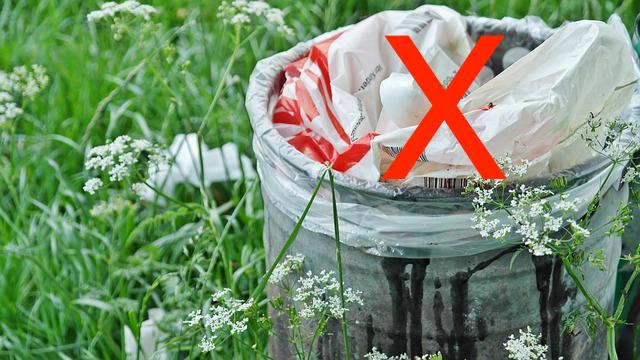
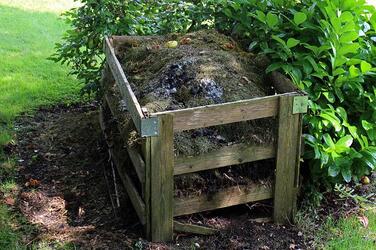
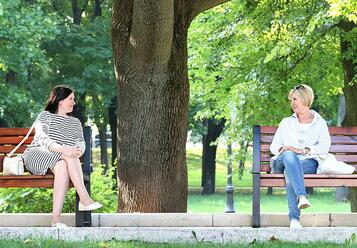
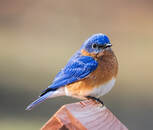

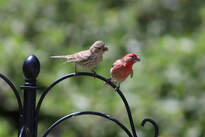

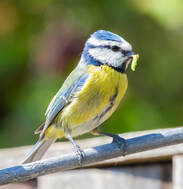
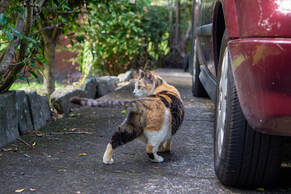
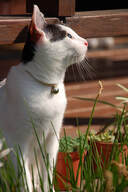


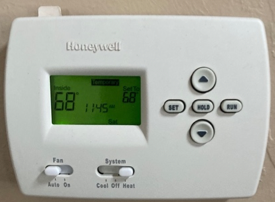


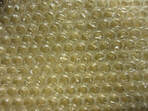




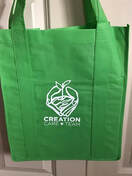
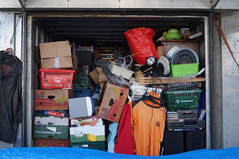
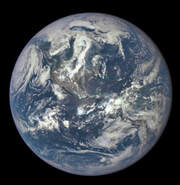
 RSS Feed
RSS Feed